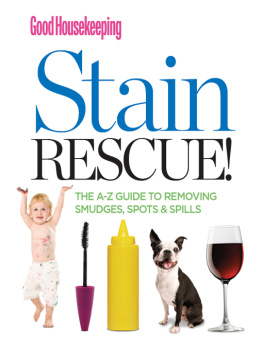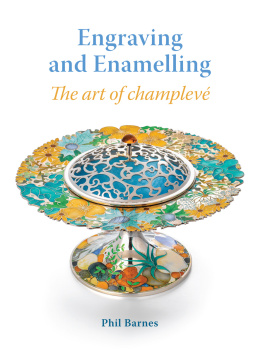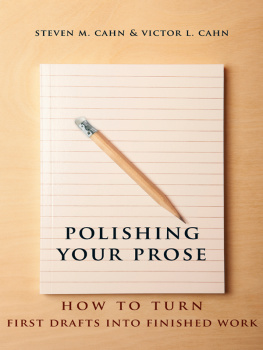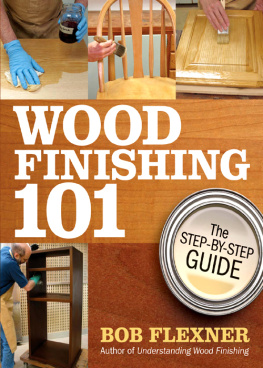THE Do It Yourself SERIES
FRENCH POLISHING
AND WOOD SURFACE FINISHING
FOR
AMATEURS
BY
C. HARDING
INCLUDING WAX POLISHING, EGG-SHELL POLISHING REPOLISHING FURNITURE, STAINING FLOORS, ETC.
Copyright 2013 Read Books Ltd.
This book is copyright and may not be reproduced or copied in any way without the express permission of the publisher in writing
British Library Cataloguing-in-Publication Data
A catalogue record for this book is available from the British Library
Wood Finishing
Wood finishing refers to the process of refining or protecting a wooden surface, especially in the production of furniture. Along with stone, mud and animal parts, wood was one of the first materials worked by early humans. There are incredibly early examples of woodwork, evidenced in Mousterian stone tools used by Neanderthal man, which demonstrate our affinity with the wooden medium. The very development of civilisation is linked to the advancement of increasingly greater degrees of skill in working with these materials. Although it may at first seem a relatively small genre of the 'woodworking canon', wood finishing is an integral part of both structural and decorative aspects of wood work.
Wood finishing starts with sanding, either by hand (typically using a sanding block or power sander), scraping, or planing. When planing, a specialised 'hand plane' tool is required; used to flatten, reduce the thickness of, and impart a smooth surface to a rough piece of lumber or timber. When powered by electricity, the tool may be called a planer, and special types of planes are designed to be able to cut joints or decorative mouldings. Hand planes are generally the combination of a cutting edge, such as a sharpened metal plate, attached to a firm body, that when moved over a wood surface, take up relatively uniform shavings. This happens because of the nature of the body riding on the 'high spots' in the wood, and also by providing a relatively constant angle to the cutting edge, render the planed surface very smooth.
When finishing wood, it is imperative to first make sure that it has been adequately cleaned, removing any dust, shavings or residue. Subsequently, if there are any obvious damages or dents in the furniture, wood putty or filler should be used to fill the gaps. Imperfections or nail holes on the surface may be filled using wood putty (also called plastic wood; a substance commonly used to fill nail holes in wood prior to finishing. It is often composed of wood dust combined with a binder that dries and a diluent (thinner), and sometimes, pigment). Filler is normally used for an all over smooth-textured finish, by filling pores in the wood grain. It is used particularly on open grained woods such as oak, mahogany and walnut where building up multiple layers of standard wood finish is ineffective or impractical.
Grain fillers generally consist of three basic components; a binder, a bulking agent and a solvent. The binder is wood finish, and in the case of oil-based fillers is typically a blend of oil and varnish. The type of binder then influences the type of solvent used; oil-based fillers usually use mineral spirits, while water-based fillers (unsurprisingly) use water. Both types of filler use silica as a bulking agent as it resists shrinking and swelling in response to changes in temperature and humidity. Once the wood surface is fully prepared and stained (or bleached), the finish is applied. It usually consists of several coats of wax, shellac, drying oil, lacquer, varnish, or paint, and each coat is typically followed by sanding. Finally, the surface may be polished or buffed using steel wool, pumice, rotten stone or other materials, depending on the shine desired. Often, a final coat of wax is applied over the finish to add a degree of protection.
There are three major types of finish:
Evaporative - i.e. wax, because it is dissolved in turpentine or petroleum distillates to form a soft paste. After these distillates evaporate, a wax residue is left over.
Reactive - i.e. white spirits or naptha, as well as oil varnishes such as linseed oil - they change chemically when they cure, unlike evaporative finishes. The solvent evaporates and a chemical reaction occurs causing the resins to undergo a change. Linseed oil cures by reacting with oxygen, but does not form a film.
Coalescing - i.e. Water based finishes; a combination of evaporative and reactive finishes, essentially emulsions with slow-evaporating thinners.
French polishing (an evaporative finish) is one of the most widely practiced, and highly respected wood finishing techniques, as it results in a very high gloss surface, with a deep colour and chatoyancy. The technique of applying shellac by rubbing it onto the furniture with a 'rubber' is widely regarded to have begun in France in the early 1800's, hence the description 'French Polish'. This procedure consists of applying many thin coats of shellac, dissolved in alcohol using a rubbing pad lubricated with oil. The rubbing pad is made of absorbent cotton or wool cloth wadding inside a square piece of fabric (usually soft cotton cloth) and is commonly referred to as a fad, also called a rubber, or mueca, Spanish for 'rag doll'. It should be noted however, that 'French polish' is a process, not a material. The main material is shellac, although there are several other shellac-based finishes, not all of which class as French polishing. 'Lac' is a natural substance that is the secretion of the Lac insect 'Laccifer lacca', which is found on certain tress principally in the provinces of India and Thailand. The protective coating secreted by the lac insect is a yellow to reddish resin, which is heated, then purified and dried into sheets or flakes for commercial use.
In the Victorian era, French polishing was commonly used on mahogany and other expensive woods. It was considered the best finish for fine furniture and string instruments such as pianos and guitars. The process was very labour intensive though, and many manufacturers abandoned the technique around 1930, preferring the cheaper and quicker techniques of spray finishing nitrocellulose lacquer and abrasive buffing. In Britain, instead of abrasive buffing, a fad of 'pullover' is used in much the same way as traditional French polishing. This slightly melts the sprayed surface and has the effect of filling the grain and burnishing at the same time to leave a 'French polished' look.
Ammonia fuming (reactive) is another traditional process, but in this case, used primarily for darkening and enriching the colour of white oak. Ammonia fumes react with the natural tannins in the wood and cause it to change colour, as well as bringing out the grain pattern; the resultant product known as 'fumed oak'. The process specifically consists of exposing the wood to fumes from a strong aqueous solution of ammonium hydroxide, and can be used on other species of wood, although they will not darken to such an extent. The introduction of the method is usually associated with the American furniture maker, design leader and publisher, Gustav Stickley at the beginning of the twentieth century, but fuming was certainly known in Europe some time before this.
As is evident from this incredibly brief overview of wood finishing techniques, it is an incredibly varied and exciting genre of professional trade and individual art; a traditional craft, still relevant in the modern day. Woodworkers range from hobbyists, individuals operating from the home environment, to artisan professionals with specialist workshops, and eventually large-scale factory operations. We hope the reader is inspired by this book to create and finish some woodwork of their own.
PREFACE
THIS book deals in non-technical language with everything that the average handyman will need to know about the staining and polishing of various woods. The author has concentrated on the processes that are most useful, explaining them thoroughly. He has given valuable recipes for stains and polishes, but has omitted many methods of working and many prescriptions for polishes which have little to recommend them. Should guidance be required on the polishing of a new article made by the handyman himself, the renovation of a piece of household furniture, the staining of a floor, or one of a hundred other interesting jobs, the fullest information will be found within.








